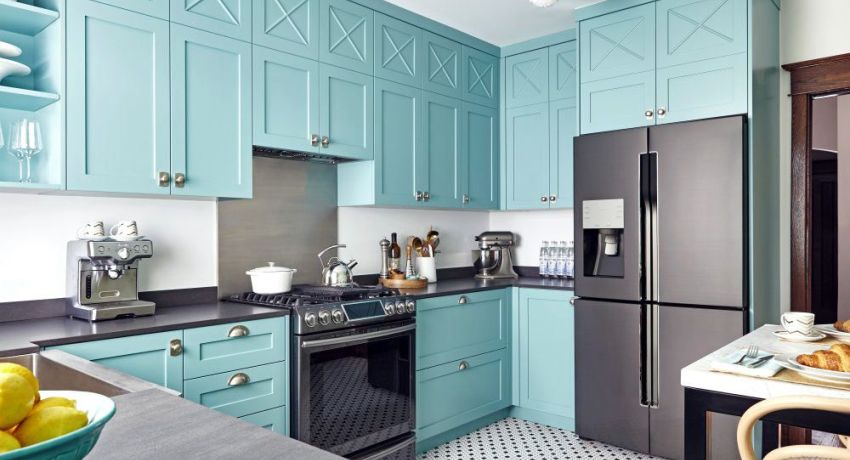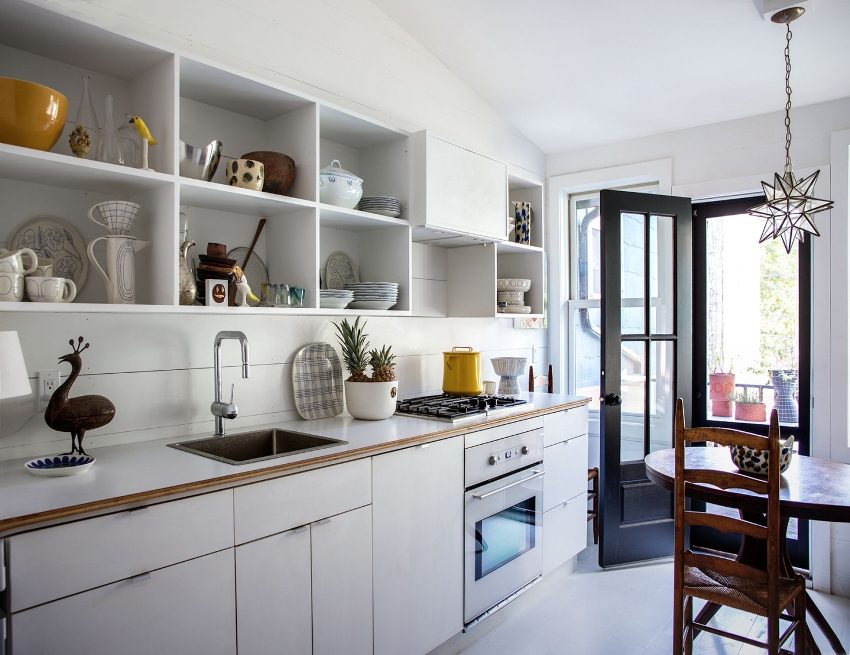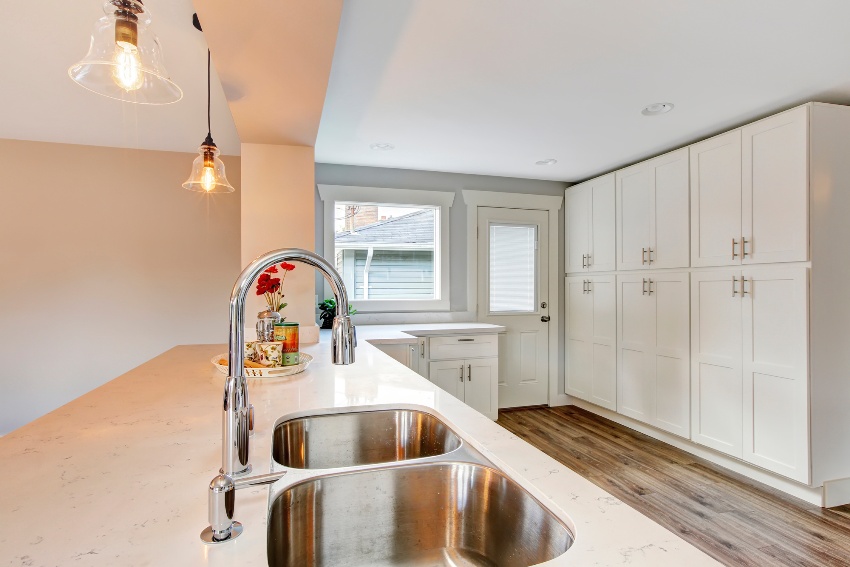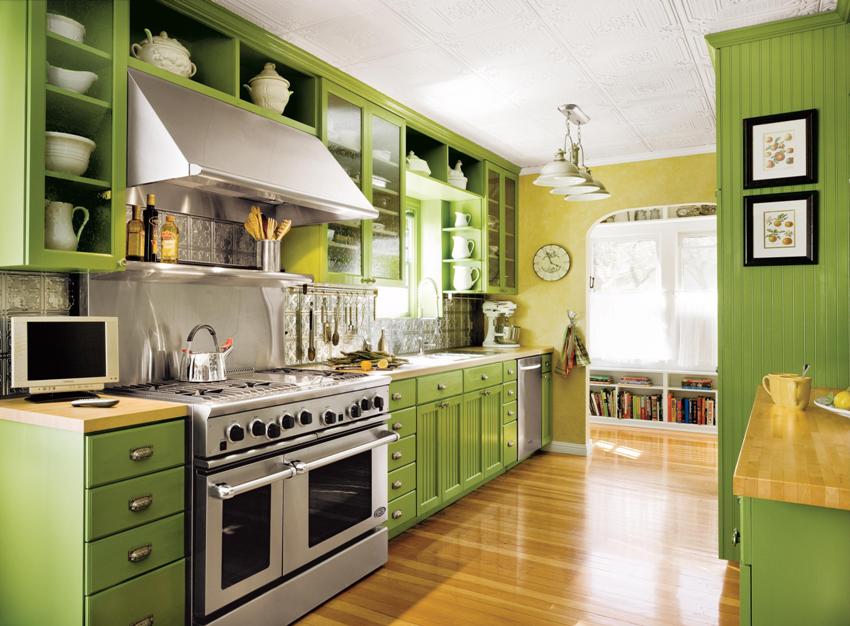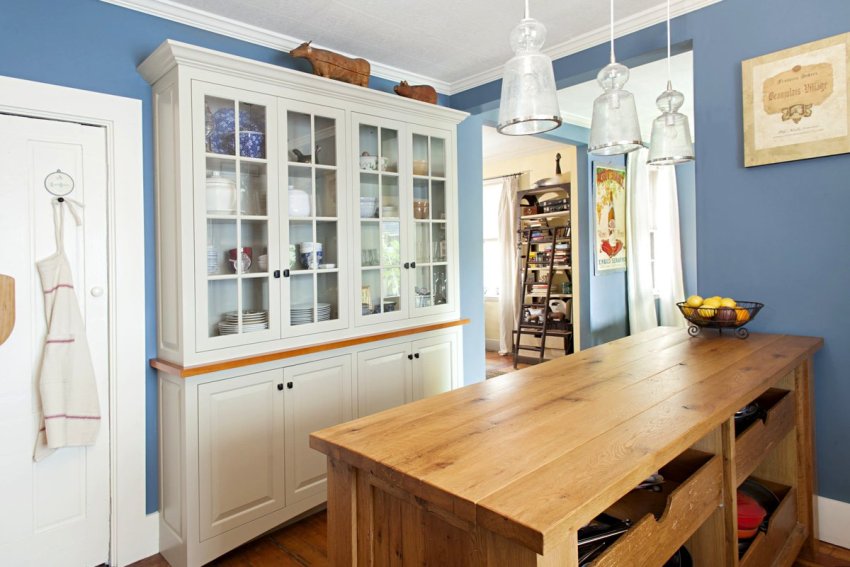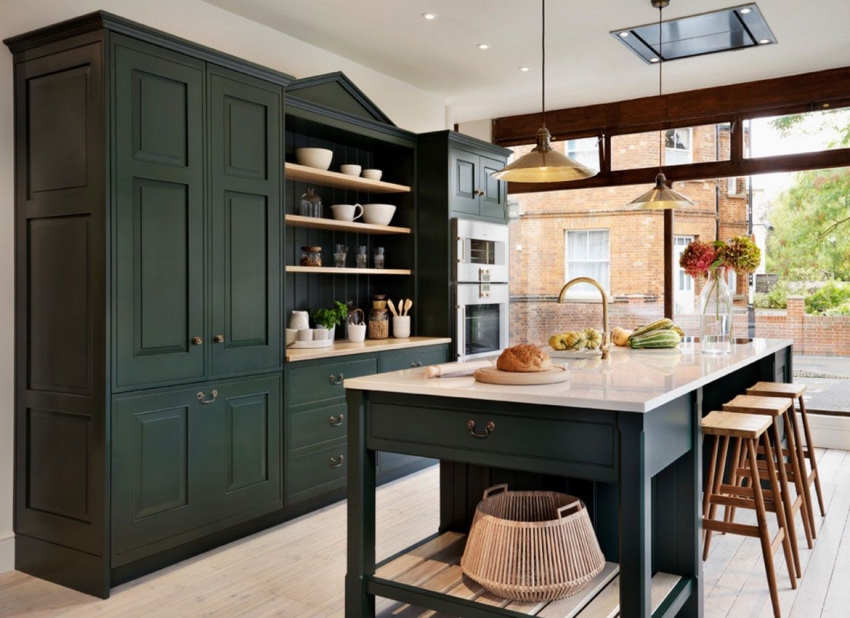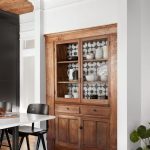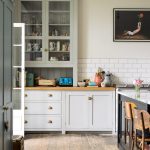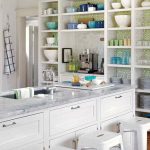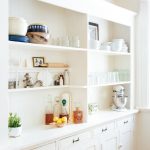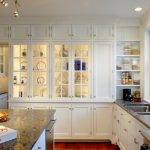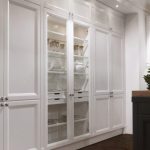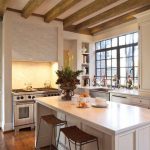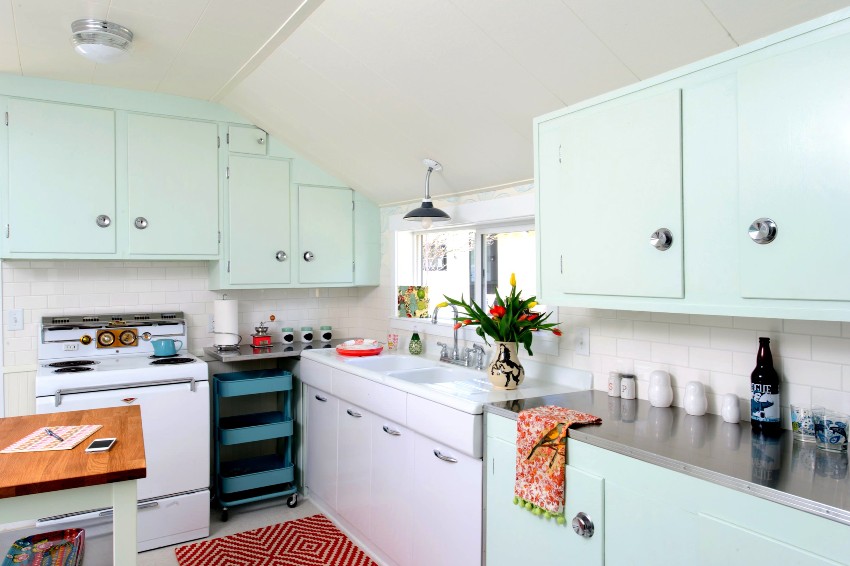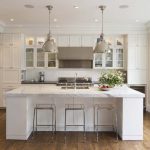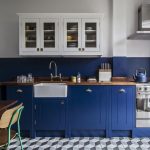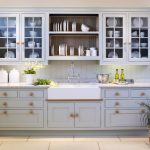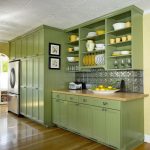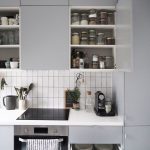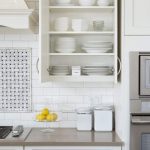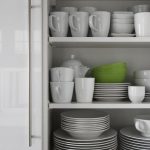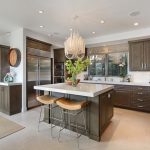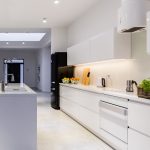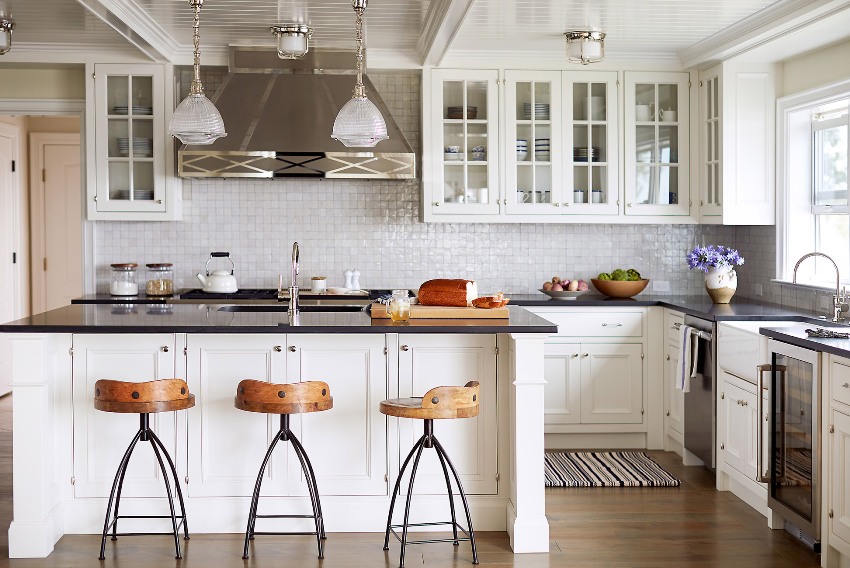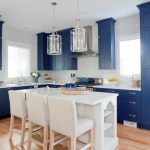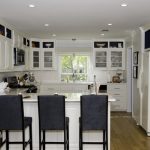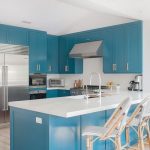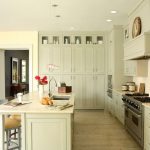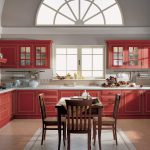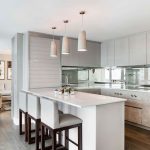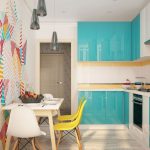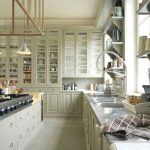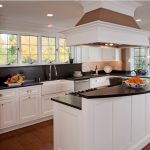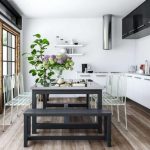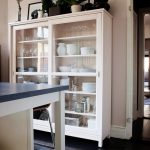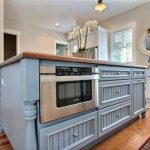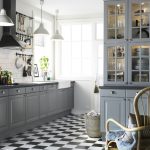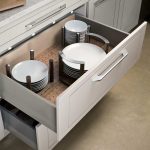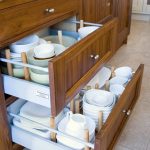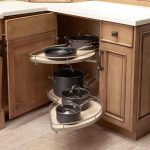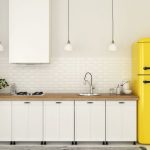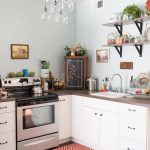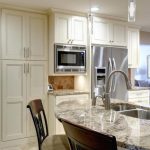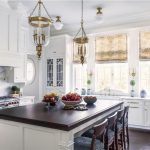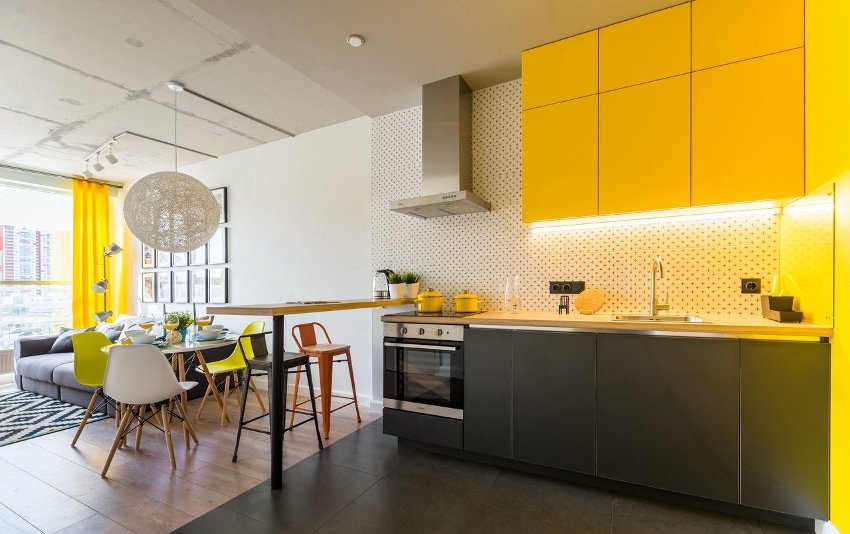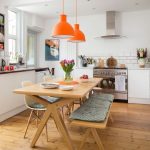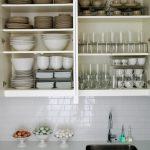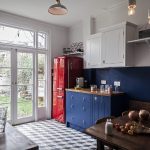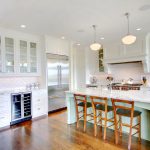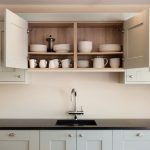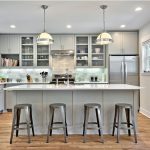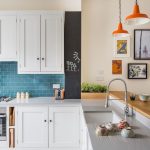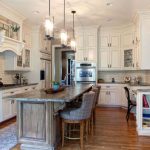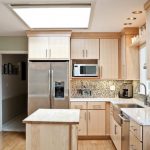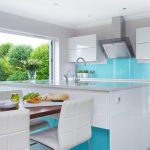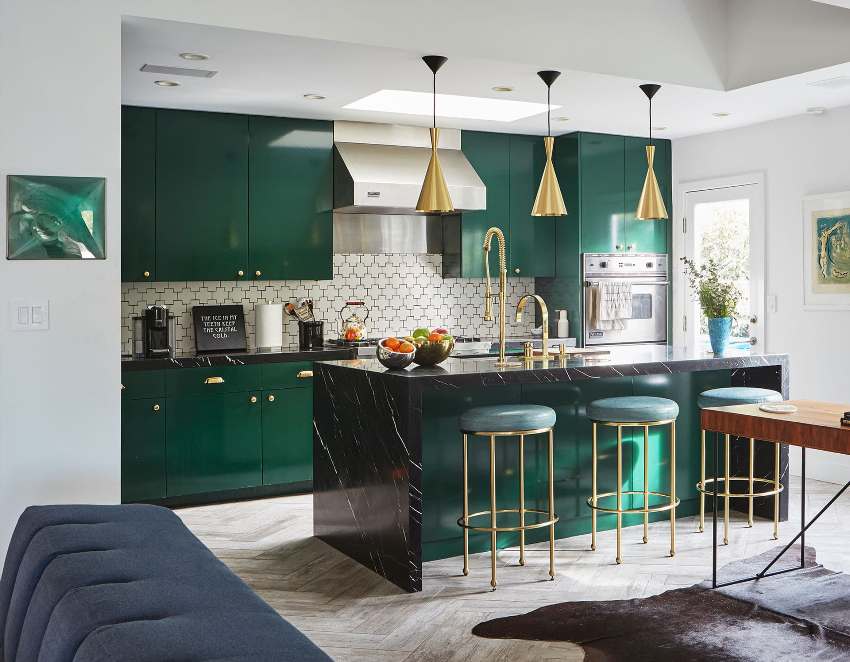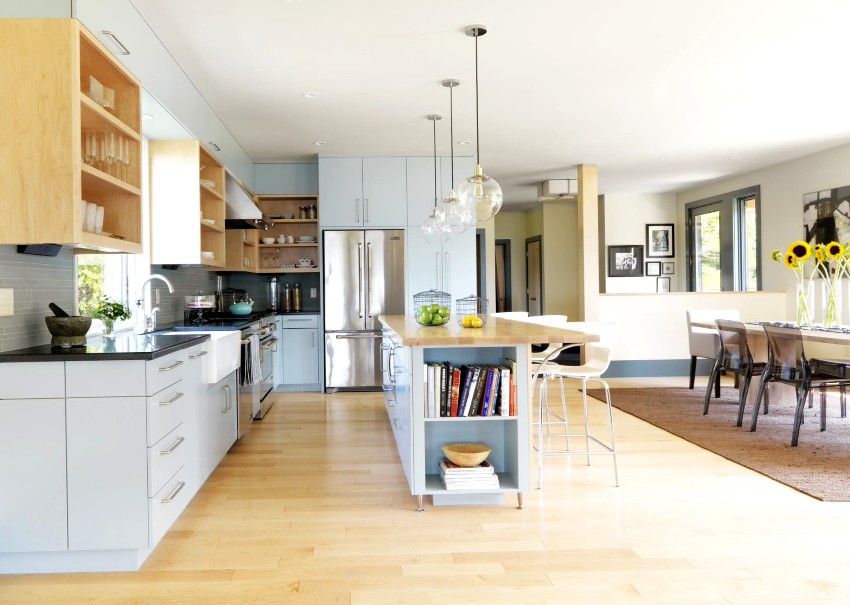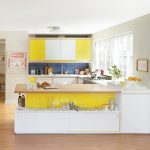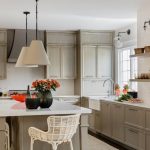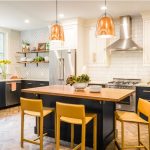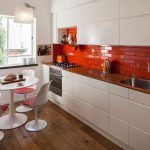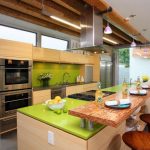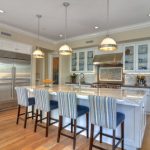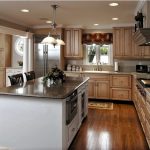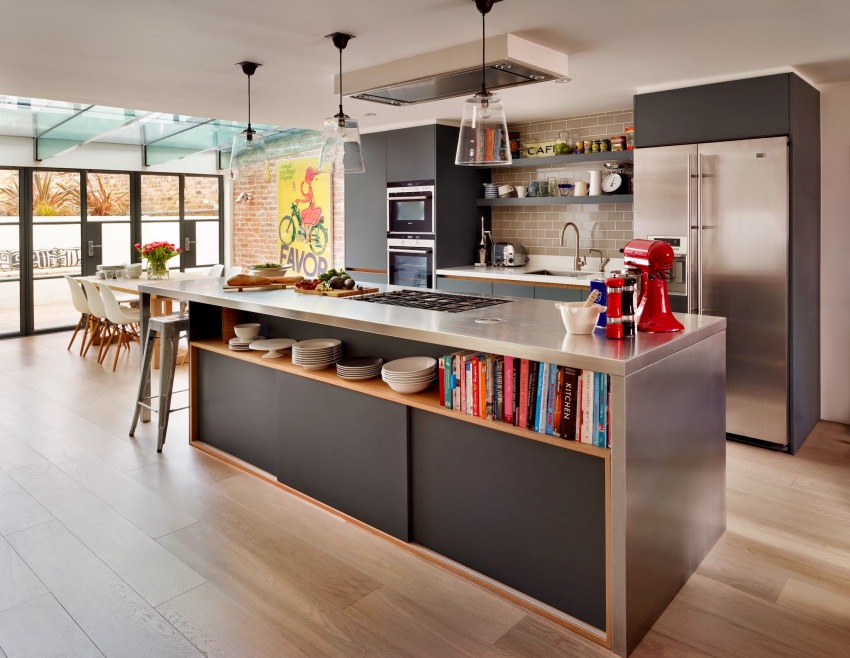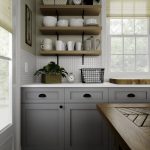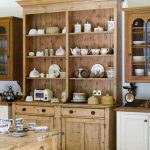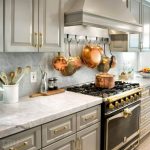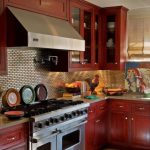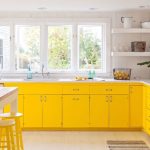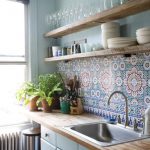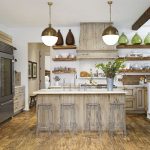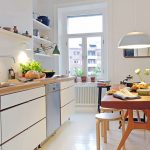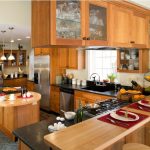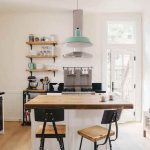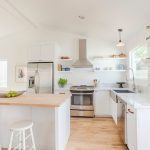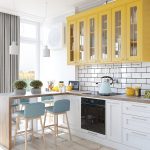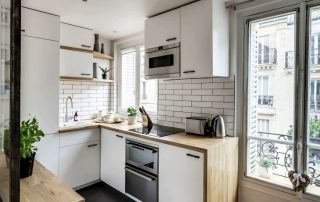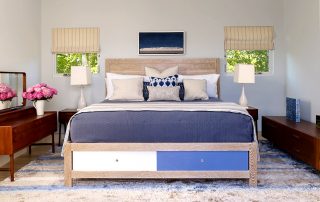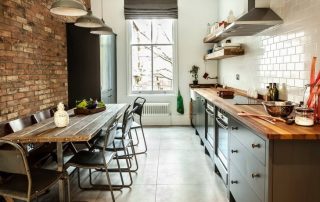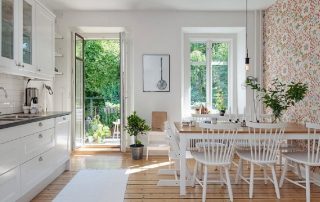Every housewife dreams of the perfect kitchen. The realization of a dream is possible subject to a number of rules. In particular, every thing must have its place. Particular attention should be paid to the arrangement of plates, cups, pots and various utensils. Therefore, when choosing a cupboard for kitchen utensils, it is necessary to adhere to the rules of ergonomics, placing only the most necessary in the cupboards, without cluttering the space. How to make the right choice, this article will tell you.
Content [Hide]
- 1 Functional features of kitchen cupboards
- 2 Classification of kitchen cupboards: structural features
- 3 Standard and custom sizes of kitchen cupboards
- 4 Rules for the harmonious combination of lower and upper kitchen cabinets
- 5 Special storage systems and shelves in the kitchen: photos of different models
Functional features of kitchen cupboards
Kitchen cabinets fulfill an important function in terms of practicality. At the same time, it is very important to use the useful space as efficiently and rationally as possible, eliminating all unnecessary items. Speaking of kitchen cabinets, it should be noted that dishes can be stored in them in different ways:
- location on open shelves for dishes, however, this option is not very effective, as it contributes to the accumulation of dust;
- placement on special racks is considered a rational, but not very practical way;
- storage in a kitchen chest of drawers in special drawers, which is not very convenient in everyday use;
- distribution of dishes in special kitchen cabinets is considered the most ideal option, since everything you need is at hand, and the doors protect against dust and dirt.
The main advantages of storing dishes in a special cabinet are as follows:
- the cleanliness of the dishes is ensured;
- rational organization of work in the kitchen;
- all items are in their place, which guarantees perfect order.
An important role in choosing a particular option for storing dishes in the kitchen is also played by the taste preferences of the owners, the size of the room, the number of items, the style and design of the kitchen.
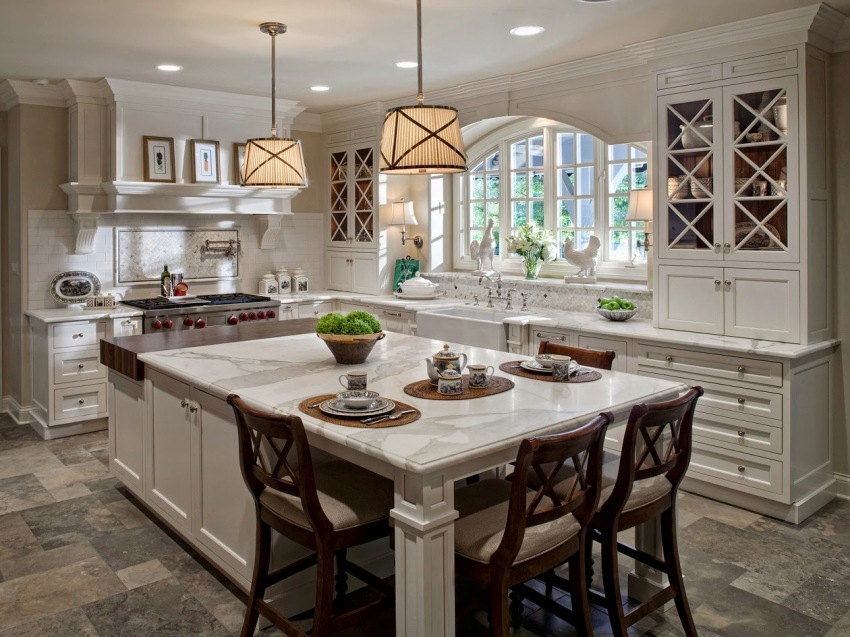
Cabinets with glass inserts allow you to quickly find the desired item and protect the dishes from dust
Cupboard for kitchen: species diversity
Depending on the location, the cabinets are straight and angular, and taking into account the type, shape and method of opening the doors, this piece of furniture can be:
- with blind doors (as a rule, these are floor models);
- with glass doors (made of transparent or frosted glass), most often these are wall cabinets, sideboards or sideboards;
- a cabinet with drawers of a pull-out type, where cutlery is stored;
- cabinets with mechanical type brackets that allow you to adjust the door lifting;
- hinged structure with book-shaped facades.
Helpful advice! If the shelves are always in perfect order and you need to quickly decide on the choice of the desired item, then it is better to give preference to cabinets with glass transparent doors. In the case when the dishes need to be hidden from view, it is better to choose cabinets with frosted glass or blind facades.
Various materials are used in the manufacture of cabinets. For example, chipboard is used for the production of economy class kitchens and cabinets. Budget options are MDF cabinets or inexpensive wood types. For elite-class kitchens, precious woods are used. You can also find metal cabinets, they are used mainly in rooms decorated in modern styles.
Kitchen cabinets are often complemented by different types of glass. Sometimes there are pure glass models. At the same time, it is important that the material from which the kitchen cupboards are made match the other furniture present in the room.
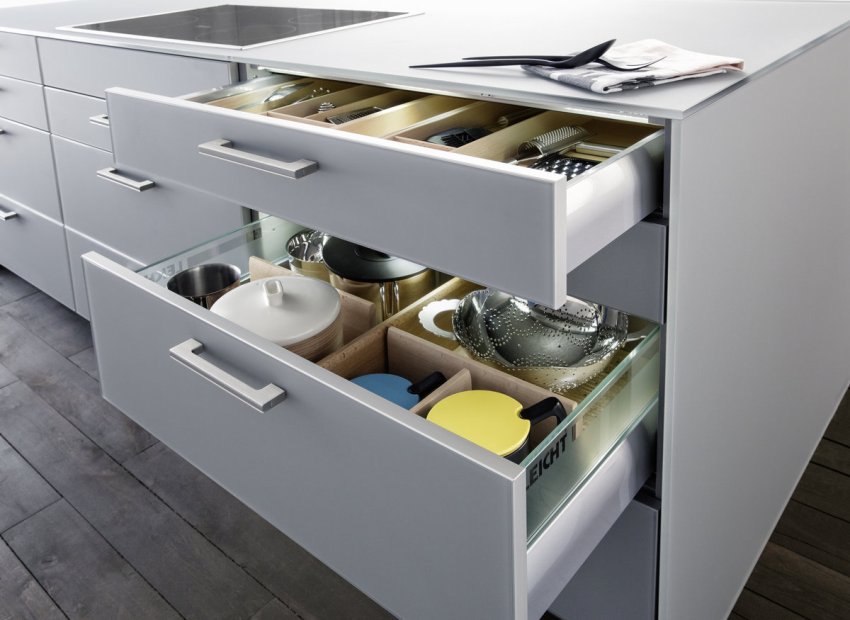
It is very convenient to store various kitchen utensils in the spacious pull-out boxes of the lower cabinets.
Classification of kitchen cupboards: structural features
Depending on the features of the structure, size and placement, cupboards in the kitchen have a number of their own characteristics and are conventionally divided into several types.
Hanging, wall or wall cabinetthat does not clutter up the space. This is the most suitable and convenient option for a small kitchen that uses a minimum of utensils.
Corner cupboard differs in compactness, depth and spaciousness. This design will fit into any room, contributing to the ergonomic use of space.
Base cabinet or kitchen cabinets installed in the lower module. They are used, as a rule, for storing heavy and bulky items.
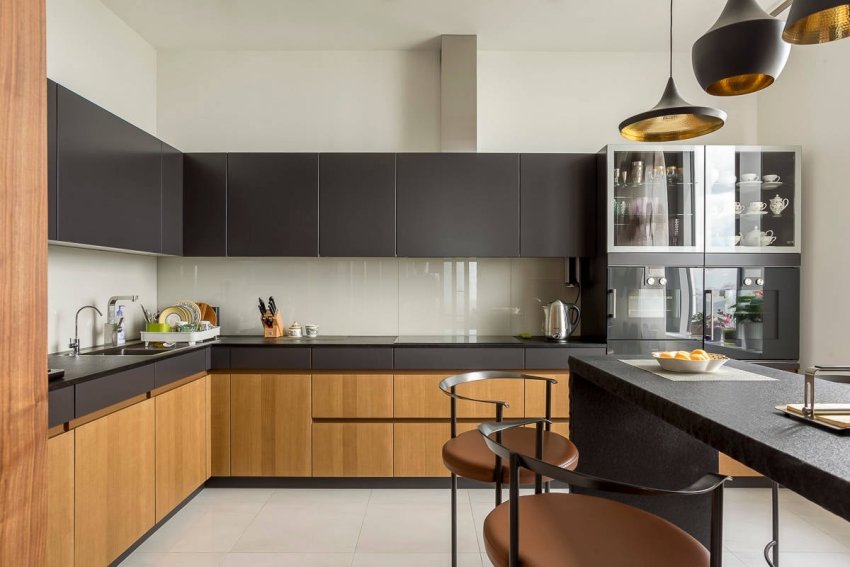
Usually, pots and pans are stored in the lower cabinets of the kitchen unit, and plates and cups are stored in the upper wall cabinets.
Buffet placed in rooms decorated in country, Provence, retro styles. These are vintage or specially aged models, where the upper part consists of shelves with glass doors, and at the bottom there are open shelves or shelves with blank doors.
Display cabinet for dishes in the kitchen Is a tall cabinet with glass doors that open the contents from top to floor. In such structures, beautiful dishes, sets, vases are stored, and not pans and pots. It is more a piece of decor than furniture.
Sideboard for dishes in the kitchen - this is a relic of the past, therefore it is rarely found in modern interiors, nevertheless it deserves special attention. Most often it is the choice of fans of vintage furniture and retro furnishings. Externally, it is a wardrobe with two levels, where the upper one is equipped with glass sections, and the lower one is equipped with a set of drawers.
Pencil cases - these are tall, narrow cabinets with blank facades. They are often used for storing kitchen appliances, but the top is mainly used to hold dishes.
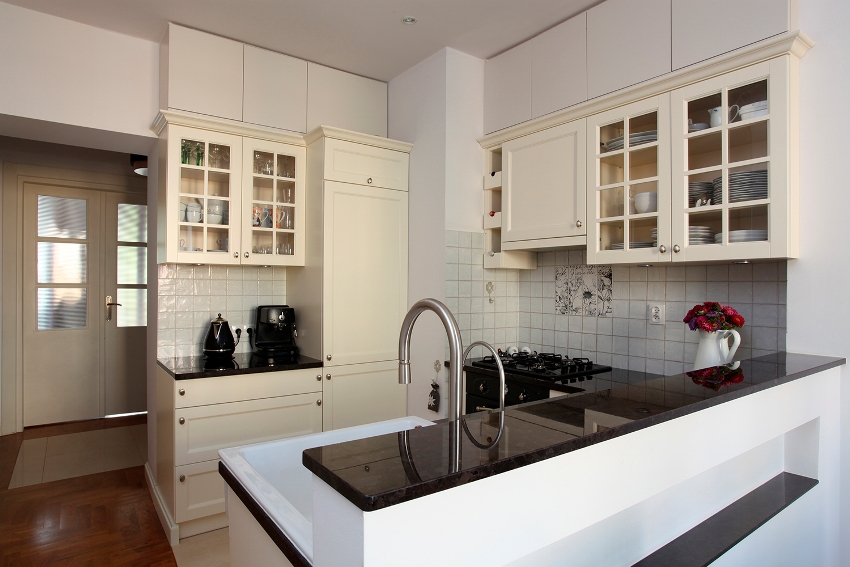
Cupboards with utensils do not have to be nearby, they can be located locally in each of the zones of the kitchen triangle
Sideboards for the kitchen: types and features of application
A sideboard is a type of cabinet furniture in the form of a base cabinet for kitchen utensils. It was especially popular in the interiors of the XIX-XX centuries.Initially, these were small wall cabinets for storing wine. Gradually the sideboards acquired a new look: they were equipped with glass shelves and doors, they became more convenient, multifunctional, they began to store dishes in them. Today solid wood is most often used for the production of sideboards.
Helpful advice! New sideboards made of natural wood are quite expensive, so antique furniture can be an excellent alternative. If you restore it using a variety of decoration techniques, you can get an original and even exclusive piece of furniture.
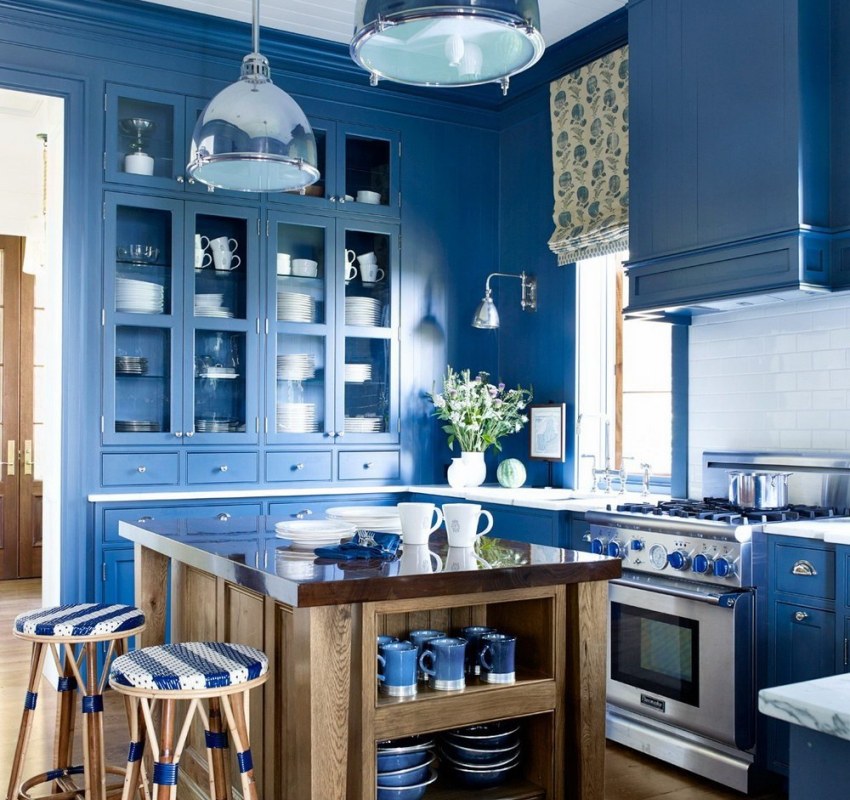
Sideboards look especially harmonious in country and Provence style kitchens
Most often, sideboards are installed in the kitchen, decorated in a classic style. Furniture made of precious woods, decorated with carving, engraving, patina, gives the interior a chic and rich appearance.
For country-style and Provence kitchens, sideboards of a simple shape made of light wood, equipped with open-type drawers and shelves, are more acceptable. The highlight of these sideboards are worn or artificially aged surfaces equipped with metal fittings.
Sideboards in kitchens decorated in modern styles should be simple and laconic, not burdened with decor, combined with the overall design of the room. Modern models can be wooden, metal, and even plastic or glass. A sideboard in a minimalist style can look like a cupboard without a top with glass fronts.
Pencil case and sideboard for the kitchen: photos of various cabinet options
The sideboard, like the sideboard, came to us from France. Previously, it was intended for storing extremely expensive dishes in the form of family porcelain or silver. In terms of its structure, unlike the sideboard, it no longer has two, but as many as three tiers. The upper part consists of shelves with glazed doors, where ceramic dishes or crystal are stored.
Related article:
Kitchen unit sizes: rules for ergonomic layout
Features of planning modern kitchens. Standard sizes of top and bottom tier cabinets. Non-standard headset dimensions.
The lower and upper parts are connected by a wooden plank, which is the back wall of the entire sideboard. Here, voluminous kitchen items are displayed. As you can see in the photo, the kitchen cupboards below are oversized cabinets that include drawers for cutlery and other kitchen stuff. The bottom part is covered with a top that can also be used for cooking. In the nightstand itself, which is equipped with blind doors, you can store bulky and heavy items of kitchen use.
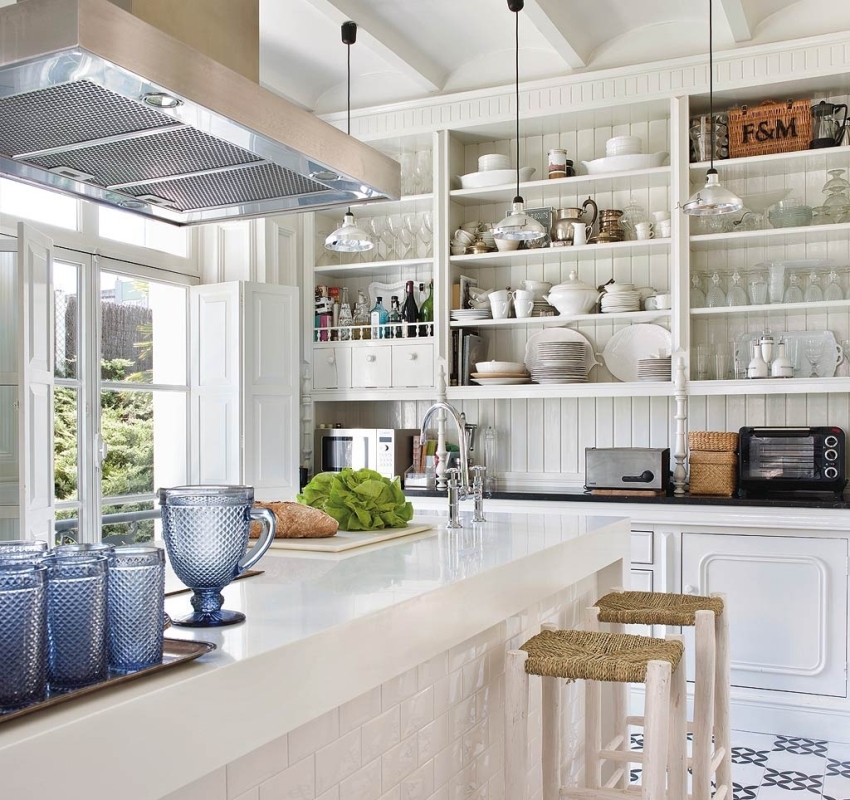
Kitchen cupboards usually have two parts - the upper one (with open shelves) and the lower one (with blind doors)
Buffets have their own special variety. They are divided into the following types:
- closed models;
- display cases;
- open options.
Closed sideboards are equipped with opaque doors made of wood or other material. Showcase cabinets are constructions equipped with hinged or sliding glass doors. Open models are cupboards without doors.
In modern interiors, you can often find cupboards in the form of kitchen cabinets. A photo of models with a glass facade without a curbstone at the bottom is a clear typical example of such furniture. To create an idea of \ u200b \ u200bthe pencil case, you can compare it with a high-rise among one-story houses. Its main advantage is maximum capacity in a minimum space. It also features versatility, ergonomics and ease of use.
Hanging cupboard for kitchen utensils: advantages and design features
Wall-mounted or hanging storage systems are the most popular designs among dish cabinets, as they have numerous advantages:
- make it possible to use the kitchen space as efficiently as possible;
- quite roomy;
- comfortable to use, since you do not need to bend towards them;
- the dishes are kept clean behind closed doors.
Helpful advice! When choosing a kitchen cabinet, you must rely on the size of the room and its stylistic design. For small rooms, it is better to choose models in light colors that contribute to the visual expansion of the space.
Hanging cupboards usually store various types of plates, saucers, cups and other items. Compact wall units for the kitchen look great in the interior of the room, help to ensure order, since the objects are located in their places.
Depending on the design features, wall cabinets for storing dishes can have a linear or angular structure. Linear modules are hung on flat wall sections. These are classic wardrobes with one or two shelves and one or two doors. Straight models are either vertical or horizontal. The first option is more convenient to use, since the horizontal design involves lifting the door opening.
Corner cupboard: structure and types of products
The corner cabinet is installed in rooms with the aim of efficient use of space. This is due to a number of its indisputable advantages, in particular:
- such furniture is quite compact and does not require much space, which makes it possible to place it in small-sized apartments, where every square centimeter is valuable;
- a corner cabinet for dishes in the kitchen allows you to solve ergonomic tasks, effectively ensuring the fulfillment of the rule of the working triangle in the kitchen "stove-refrigerator-sink";
- corner furniture helps to solve the problem of space zoning and make the kitchen more functional;
- a corner wall cabinet for the kitchen does not allow the corner to "walk", any items and dishes can be stored here, therefore this area is often used as a drying area;
- ample space in the corner makes it possible to install carousel or pull-out shelves, as well as spacious drawers.
The main disadvantage of such cabinets is their high cost, which, however, is justified by their elegance and functionality.
Corner cabinets can be L-shaped or U-shaped. The first type is more popular, as it involves the use of one corner. The second version of the corner design implies the placement of cabinets along the wall and in two corners at once.
Standard and custom sizes of kitchen cupboards
Hanging cabinets for storing dishes have the following standard parameters:
- depth - 30 cm;
- width - 30-120 cm;
- the height depends on the ceiling of the kitchen, the height of the hostess and can be 36, 72 or 92 cm.
In order to organize the kitchen space as efficiently as possible, the wall cabinet for storing dishes is equipped with shelves that divide it into certain storage areas. It should be noted that the parameters of the product also depend on its function and the overall dimensions of the kitchen modules. Most often, drawers and shelves are made individually for specific cabinet models.
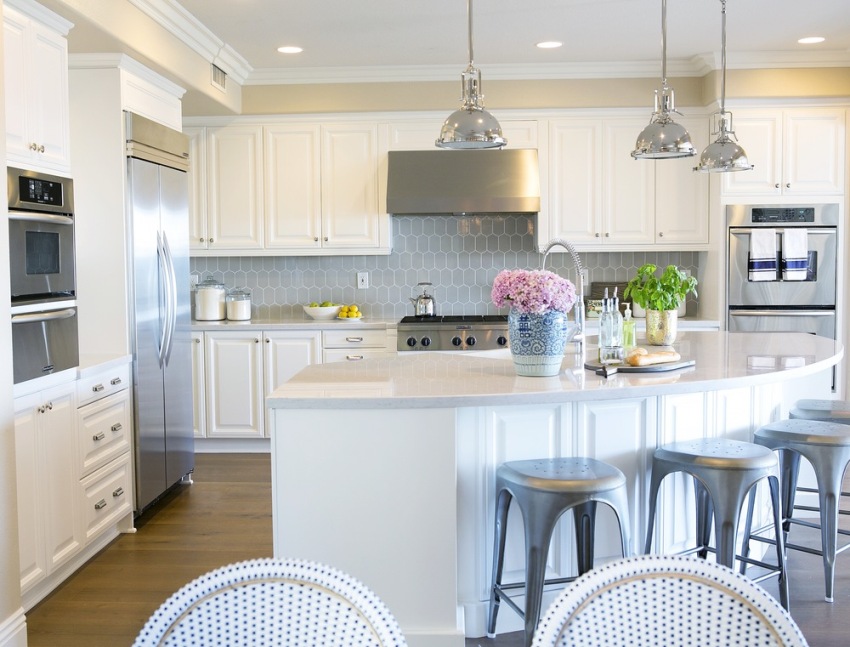
You can purchase both ready-made sets of kitchen furniture, and make custom-made cabinets according to individual sizes
Helpful advice! The height of the top cabinet will be ideal if the first shelf is at eye level. This is where the essentials should be kept. In a cupboard, these are usually plates.Also, the level of the cabinet must be calculated based on the height of the product itself and the total number of shelves.
When choosing furniture, special attention should be paid to the depth of both the floor and wall modules. The cabinet with a standard depth of 30 cm can accommodate regular-sized plates. If this parameter is violated, then the operation of the cabinet will be inconvenient, since it is impossible to place an ordinary portioned plate in it. As for the lower cabinets, where the standard worktop has a depth of 60-90 cm, their dimensions will be several centimeters smaller. The dimensions of the drawers depend on the dimensions of the cabinets themselves, although their depth can be adjusted individually.
At what height from the work surface to hang kitchen cabinets
The standard height for placing the top cabinet above the countertop is 50-56 cm, although this is not the main condition. First of all, the level of fastening of hanging cabinets is not regulated by mandatory standards, but by individual characteristics. In particular, the average height of family members is taken into account, and most importantly, the growth of the hostess herself. An equally important parameter is the dimensions of floor-standing kitchen cabinets and pedestals. The rule applies here: the deeper the lower module, the smaller the distance should be from the countertop to the upper cabinet, since the hostess will need to reach for the doors.
The height of the kitchen cabinets above the countertop is 50 cm, based on the average dimensions of the kitchen appliances. For example, such an arrangement will protect the upper cabinet from the harmful effects of steam produced by a multicooker or electric kettle.
It is also necessary to take into account the fact that the hostess must freely get items from the upper shelves. There are exceptions when the height of the hanging kitchen cabinets is much higher than the standards. Typically, these cabinets are installed in rooms with high ceilings. It is also very important that the furniture does not block the smoke ventilation ducts, and that the gas and ventilation pipes are located above the cabinets, and not inside them.
In addition to the above, you should take into account the aesthetic side of the kitchen design. Installation of cabinets should not spoil the interior of the room. Surprisingly, every 10-15 cm is important in the arrangement of the kitchen. It is necessary not only to conveniently place the upper modules, but also to choose the correct height of the kitchen cabinets from the floor.
Rules for the harmonious combination of lower and upper kitchen cabinets
The most popular way to furnish a kitchen is to purchase ready-made modules and one-piece headsets. This option is relevant in the kitchen of standard sizes, however, in small-sized rooms, a useful and effective method will be the selection of kitchen cabinets and cabinets element by element. To this end, you need to decide in advance on the necessary components of the headset. To do this, you should make sketches and sketches yourself, highlighting priorities, and only after that contact a designer for services.
Helpful advice! If household appliances are already installed in the kitchen, then the pieces of furniture must be placed in such a way that the operation of each appliance is convenient.
In order to determine a specific set of furnishings, you need to know their main types. The pedestal table serves both as a work surface and as a place for storing dishes and other kitchen utensils. Kitchen table-cabinet (cabinet) can have the following design:
- one-door;
- two-door;
- equipped with drawers (from one to three);
- with doors and drawers.
Suspended kitchen modules can have:
- from one to three open shelves without doors;
- cupboard for kitchen with glass;
- dish-drying cabinet;
- cabinet for building in the hood.
A competent selection of modular cabinet elements will make the kitchen functional, while using the kitchen space with maximum efficiency.
Special storage systems and shelves in the kitchen: photos of different models
Open shelves in the kitchen are very convenient, since in order to reach any object, you do not need to open and hold the door. Here you can store containers with spices, cutlery in the form of spatulas, slotted spoon, glasses and decor items. The main disadvantage of such shelves is that they are not very spacious, and the items located on them require constant and careful care.
An important and indispensable attribute in the kitchen is a dish drainer, which is usually placed in a special closed cabinet, the design of which contributes to the rapid drying of dishes.
Convenient pull-out metal devices were invented for storing small dishes. These are nets and baskets that significantly save space in the headset, while making it easier to access items and allowing you to use space wisely.
The bottle rack (cargo cabinet) has a special design, which is a narrow and long pull-out module. As the name suggests, it is supposed to store bottles in it, although cutting boards, trays and other flat items are perfectly located in such cabinets.
The kitchen carousel is a shelf that rotates in a circle, which allows efficient use of space in corner cabinets. This design involves the placement of even large items such as pots and pans.
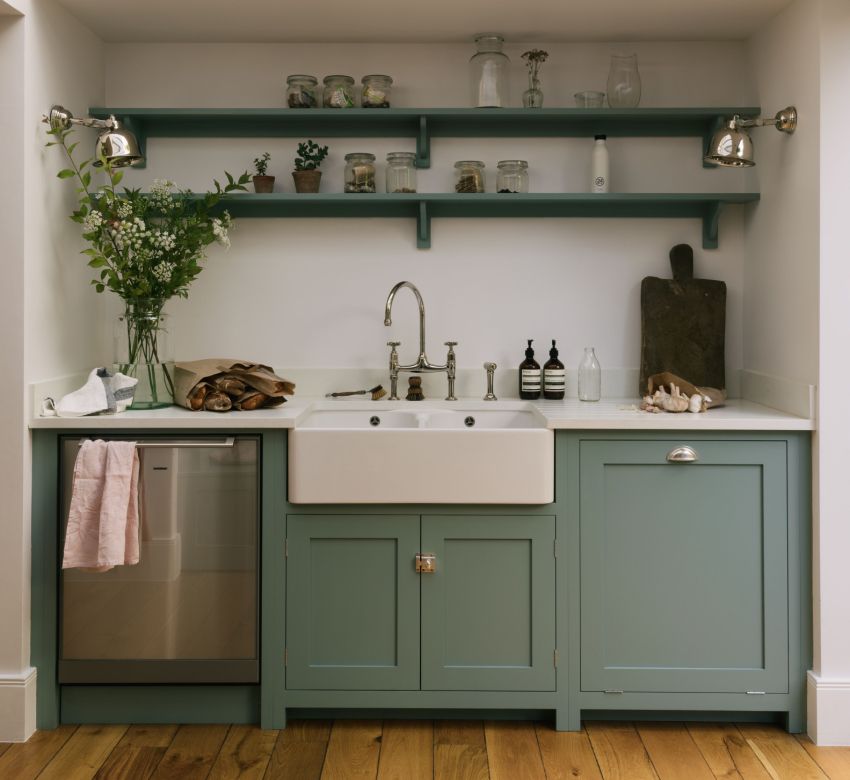
In order not to clutter up the space of a small kitchen, instead of hanging cabinets, you can equip open light shelves
The convenient and perfect mechanism, which the drawers are equipped with, makes it possible to smoothly slide them out and in, even with the maximum load of items. The railing systems have special attachments with hooks designed to place potholders, ladles, skimmers and other kitchen utensils on them. They, like the storage device for plastic lids, are placed inside the cabinets or outside - on the kitchen wall.
Thus, the parameters of the cupboards should correspond to the size of the kitchen, and the shape and location should correspond to the height and other individual characteristics of the hostess. It is important that the most essential utensils are on hand - in an accessible place. If a spacious kitchen allows you to place many cabinets and storage systems, then a small-sized room requires a special approach, where all modern inventions of ergonomics should be used with maximum efficiency.
